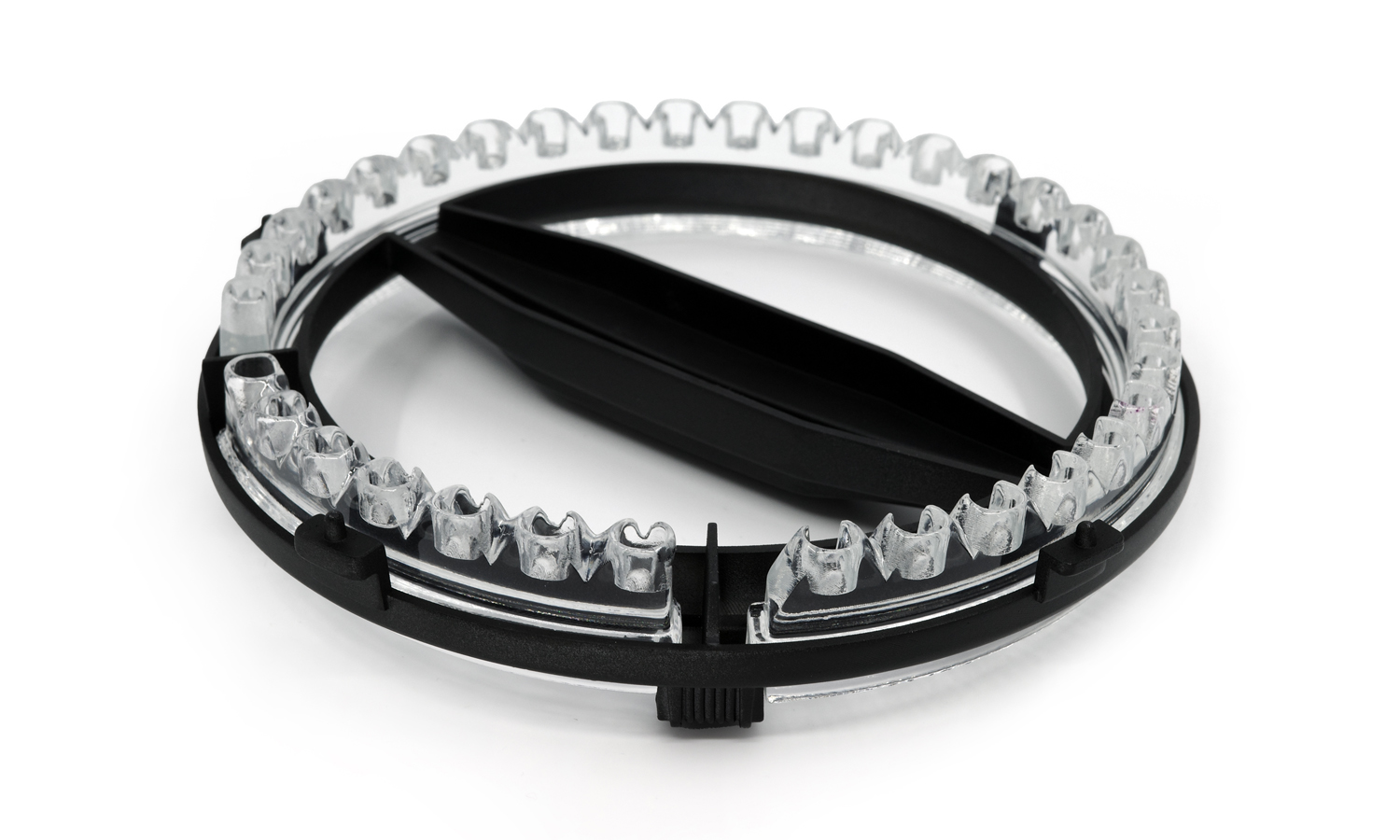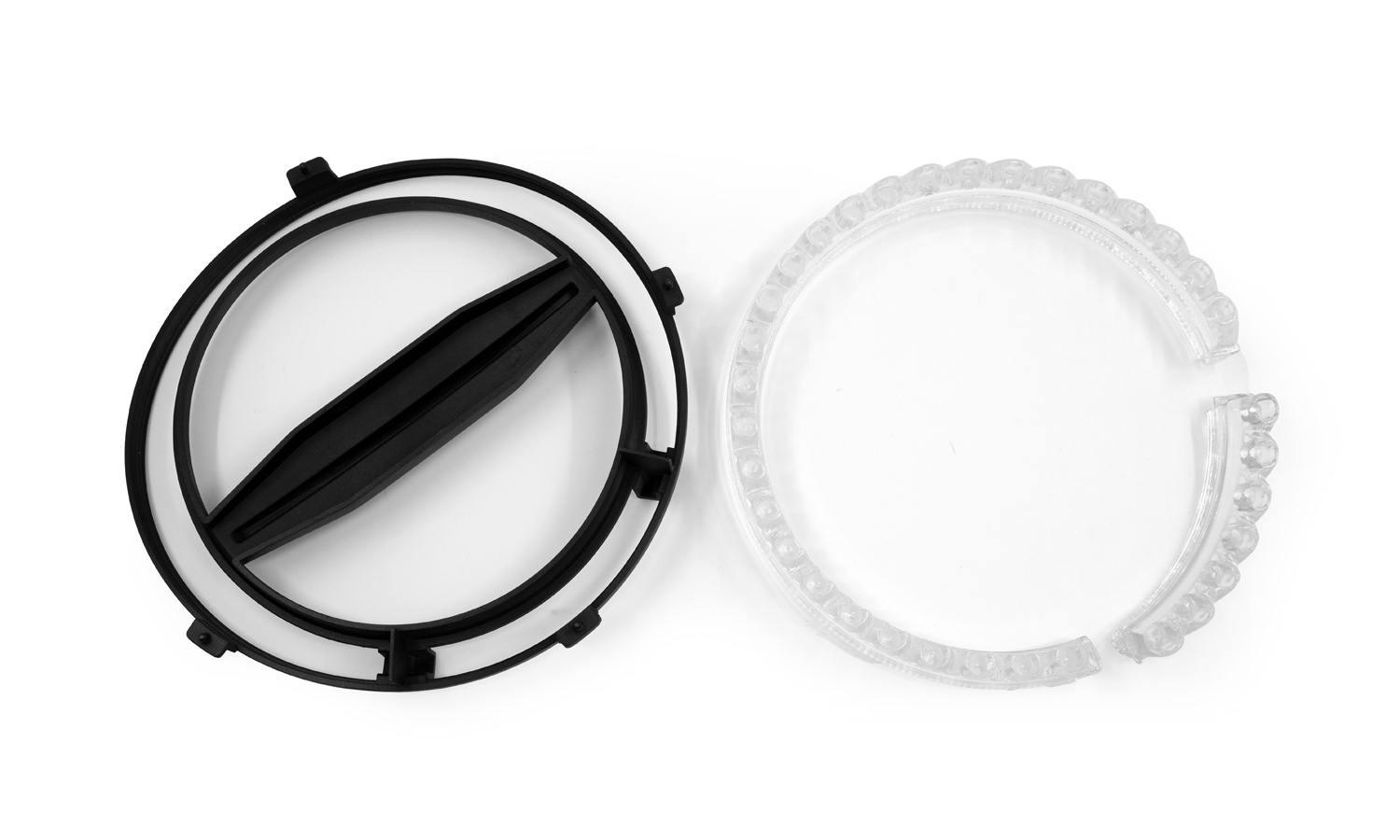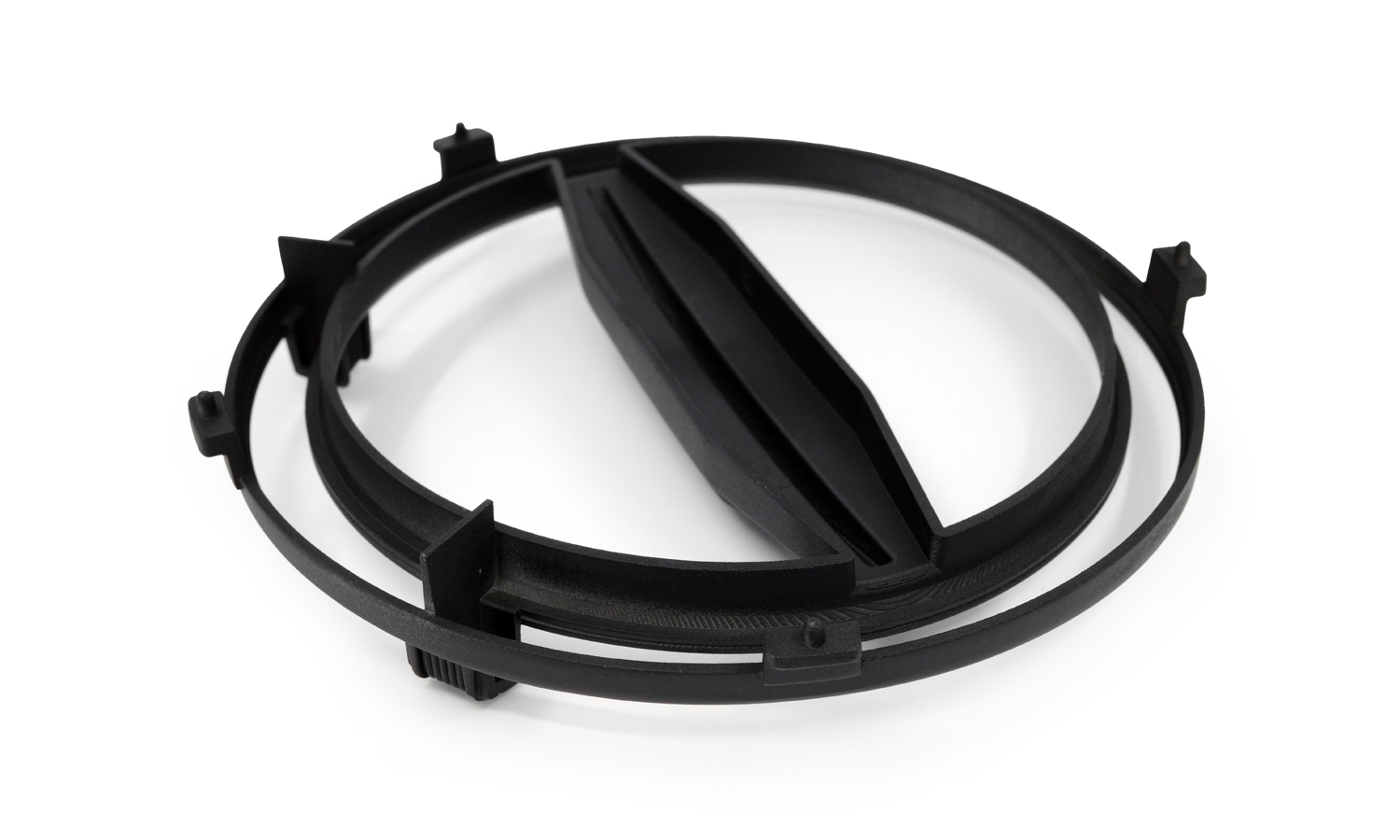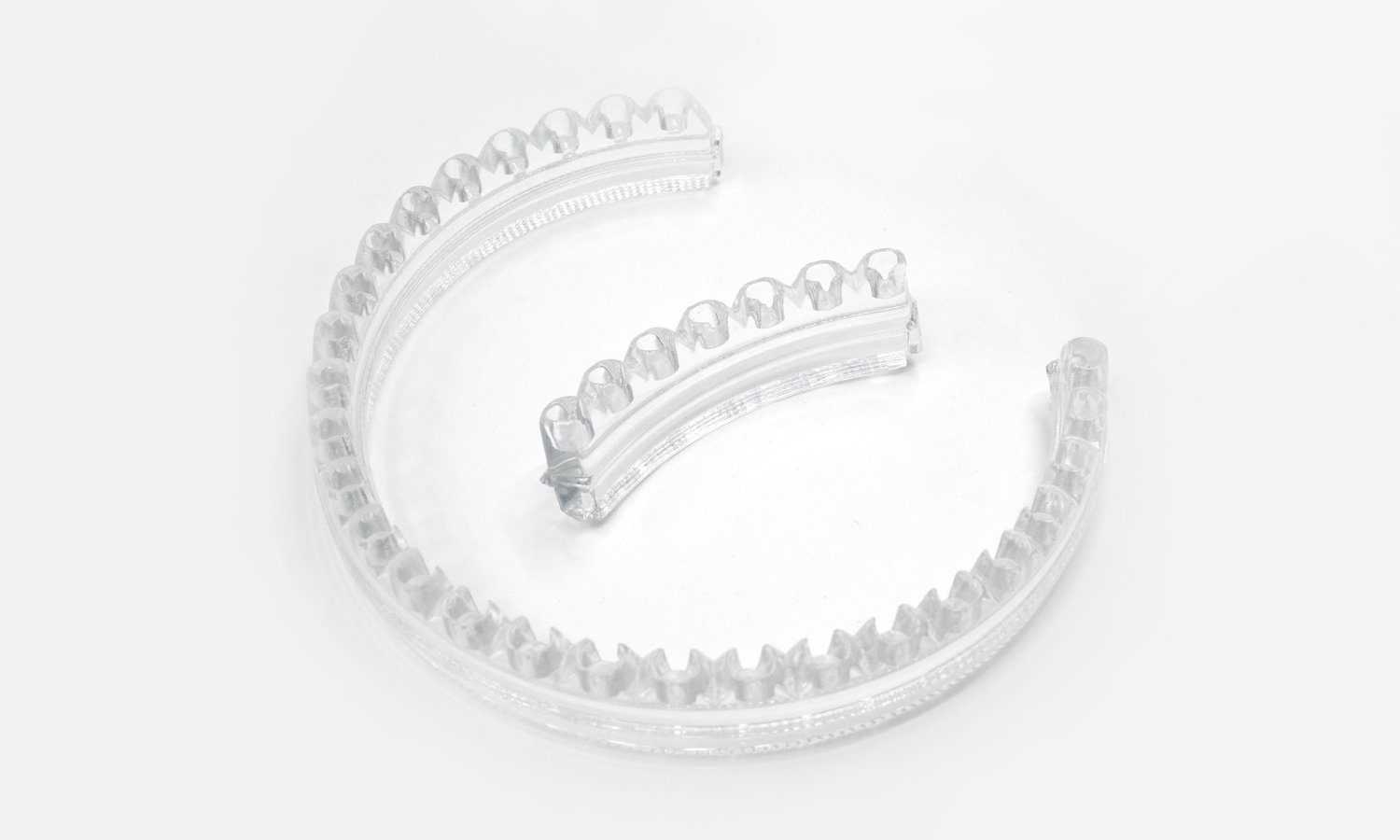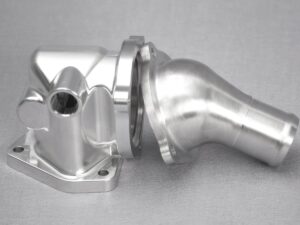Material Resin
Quantity 1 pcs
Price Range $1-100
Lead Time 5 workdays
Gallery
About Project
This striking prototype showcases a detailed car headlight assembly, brought to life using SLA 3D printing technology. Designed for both function and form, the model highlights the advanced capabilities of resin-based additive manufacturing in automotive prototyping.
The assembly consists of two key components:
- The black structural base, printed with SLA Generic Resin and painted black, forms the main housing and support frame. It provides strength, alignment, and a realistic finish that simulates the final molded part.
- The clear lens ring, printed with high-clarity transparent SLA Clear Resin, replicates the light guides typically found in modern LED daytime running lights (DRLs) or halo-style headlights. These intricate elements are designed to direct and diffuse light from embedded LEDs for both safety and aesthetic appeal.
The design mimics what you’d see in premium automotive lighting systems. The transparent section features multiple curved light guides – engineered to catch and channel light evenly across the ring. This kind of optical design is essential in modern headlight assemblies, where performance and appearance go hand in hand.
Such SLA prototypes are crucial for design validation, optical testing, and aesthetic reviews before investing in expensive injection molds. The smooth finish, fine detail, and material versatility of SLA printing make it a top choice for automotive designers and engineers.
At FacFox, we specialize in high-resolution SLA prototyping for complex assemblies like this. Whether you’re developing lighting components, dashboards, or full-scale bodywork models, our resin printing solutions deliver the precision and clarity your designs demand.
Bring your automotive concepts to life with FacFox – your trusted partner for rapid, reliable, and production-grade prototyping. Get in touch today to explore our wide range of 3D printing and manufacturing services.
Solution
- Step 1: The CAD design of the car headlight assembly was prepared, incorporating both the black structural base and the transparent lens ring. Careful attention was paid to geometry, alignment, and light-guiding features.
- Step 2: The digital model was sliced and configured for SLA 3D printing, with appropriate support structures and layer resolution settings applied to ensure high accuracy and surface quality.
- Step 3: The black structural base component was printed using SLA Generic Resin. The printing process was executed layer by layer, using a UV laser to cure the resin selectively based on the model’s cross-sectional data.
- Step 4: Once the print was completed, the structural base was removed from the build platform and post-processed. Excess resin was cleaned off using an isopropyl alcohol (IPA) bath, and the part was then UV-cured to achieve full mechanical properties.
- Step 5: The cured base component was painted black to simulate the final appearance of an injection-molded automotive part. The paint was applied evenly to enhance realism and surface finish.
- Step 6: Separately, the clear lens ring was printed using SLA Clear Resin, selected for its high optical clarity and smooth surface finish. The same SLA printing and post-processing steps were followed: printing, cleaning, and UV curing.
- Step 7: The transparent component was carefully polished and coated with a thin layer of clear acrylic paint to enhance transparency and optical performance. Special care was taken to preserve the integrity of the curved light-guiding structures.
- Step 8: Both components-the black structural base and the transparent lens ring-were assembled to form the final prototype. Alignment features were used to ensure proper fitment and positioning.
- Step 9: The assembled headlight prototype was inspected for dimensional accuracy, surface finish, and optical functionality. It was then used for design validation, optical testing, and aesthetic review.
